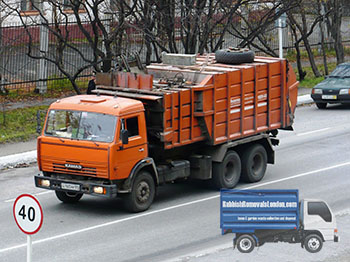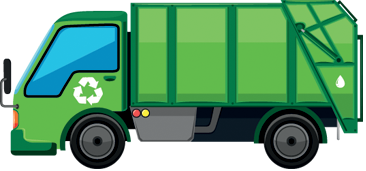Like any other piece of machinery, the average rubbish removal truck has come a long way. As most people have seen, especially in the UK, there are quite a few different types of rubbish removal trucks in use, and they have quite different equipment, processing capacity and purpose. Rubbish removal vehicles in the UK have been changing along with industry and municipal requirements for at least ten years now. It is the composition and volume of municipal and industrial waste streams that have called for the need for better, more efficient and technically advanced rubbish trucks to be put in use.
 In the early two thousands it was decided that the UK will move from an almost entirely landfill based waste management system, to one in which more than fifty percent of all municipal waste is recycled or otherwise processed. Shortly after the system was implemented but as it turned out the technical infrastructure, including rubbish removal trucks was not up to the new requirements and hampered the new collection and recycled system to some extent. At the time, engineers and local authorities sat together to figure out what needed to be done. Overnight development and construction of new rubbish removal trucks featuring all that was required was simply out of the question as it would have been simply too expensive and too slow, plus not all of the required technology was available at the time.
In the early two thousands it was decided that the UK will move from an almost entirely landfill based waste management system, to one in which more than fifty percent of all municipal waste is recycled or otherwise processed. Shortly after the system was implemented but as it turned out the technical infrastructure, including rubbish removal trucks was not up to the new requirements and hampered the new collection and recycled system to some extent. At the time, engineers and local authorities sat together to figure out what needed to be done. Overnight development and construction of new rubbish removal trucks featuring all that was required was simply out of the question as it would have been simply too expensive and too slow, plus not all of the required technology was available at the time.
In result, adaptations and modifications had to be made on existing vehicles so that new requirements could be met. One of the main sources and inspiration of new technology were small scale, either private or public waste management and recycling operations which dealt with specific types of waste. Some of the equipment and technology adopted from small scale, specialised waste management operations was adapted for deployment on large vehicle fleets usually in use by local authorities. Some of these are now common and standard on all rubbish removal vehicles.
Day to day use of these newly equipped vehicles has made collection as well as further processing of waste more efficient and less resource intensive as some of the pre-processing of waste is done on board the collection vehicle right after rubbish removal. There were other specific issues to be addressed like the type of waste i.e. its composition, the new trucks had to be fitted specifically for the type of rubbish they were collecting and pre-processing, again this was done using new pieces of technology adopted from specialised waste management operations. Another aspect of waste collection vehicle modernisation was redesigning and equipping the truck to be able to transport larger volume of waste rather than higher weights of rubbish. Again, this was signalled by changing patterns in consumption which in turn alter waste stream composition.
Equipment was also developed and implemented to even out loads safely, without human interaction. Evening of loads meant that available storage space in the vehicle was used much more efficiently without risking injury to operators. New health and safety instructions were also devised to keep staff safe while they step off the vehicle in heavy traffic conditions.

